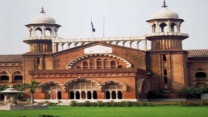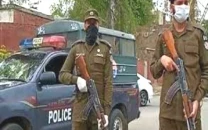New nature reserves to boost tourism
Chakwal has tourist attractions like Tilla Jogian, Nandana Fort, Sikki Lake

The newly notified nature reserves will help boost adventure, historic and heritage tourism in the area along with generating green jobs and business opportunities for locals under 10 Billion Tree Tsunami.
Special Assistant to the Prime Minister (SAPM) on Climate Change Malik Amin Aslam said this with regard to three newly inaugurated interconnected nature reserves spreading over Parera, Ara and Dil Jabba areas of 18,000 acres in Chakwal district of the Rawalpindi division.
He said these reserves were home to the most attractive tourist and heritage sites of Tilla Jogian, Nandana Fort, Sikki waterfall, Sikki Lake and most interesting paragliding point.
The historic sites included The Nandana Fort, the tomb of Hazarat Hamm, Dhamrayi and Bhatta Darbars.
The Nandana Fort was built under the patronage of Hindu Royal empire that had military significance in the Salt Range. The King of Hindu Royal empire Jayapala's son Anandapala built a Shiva Temple at this site where the Fort's name was derived from Hindu god's garden which was conquered by Mahmood Ghaznavi in 11th century.
Moreover, the great Muslim philosopher, mathematician and historian Abu Rayhan Al-Beruni also measures the Earth's circumference at this spot where the Fort's remains were present on the occasion, he informed.
The nature reserves were notified under the Prime Minister's Protected Areas Initiative to ensure protection and sustainable management of the forests existing in Chakwal, he told APP adding, these protected areas would be linked to historical and heritage tourism aimed to highlight thousands of years old civilization sites in the area along with Eco-tourism.
He added that the three particular interventions were made in this project to involve local community. Firstly, the forest guards were hired from the local community. Secondly, there were wild olives proliferating in the natural forest reserves which would be enabled to bear olive fruit after grafting within next two years which would benefit local communities.
Thirdly, he said local masses would be given bee hives to breed honey bees producing honey under 10 Billion Tree Honey initiative of the government.
The SAPM highlighted that the area was cradle of centuries old civilization heritage where Nandana Fort was the most significant place as Al-Beruni calculated the world's circumference at this location.
"This is our historical heritage that has been forgotten and will be revived through this ecotourism initiative."
He said an information center with toilets and rest house was being renovated to provide proper facilities to the tourists.
To a question, he said infrastructure development was the responsibility of the Punjab government which would help boost revenue at the local and provincial level.
He went on to mention that local communities through education and awareness sessions would be taken on board to protect the wildlife from poaching and hunting as no hunting was allowed in these natural reserves.
Responding to another query, he said ten walking trails were developed within these three sites which was a scenic place for hikers and adventure tourists.
Published in The Express Tribune, February 8th, 2021.



















COMMENTS
Comments are moderated and generally will be posted if they are on-topic and not abusive.
For more information, please see our Comments FAQ